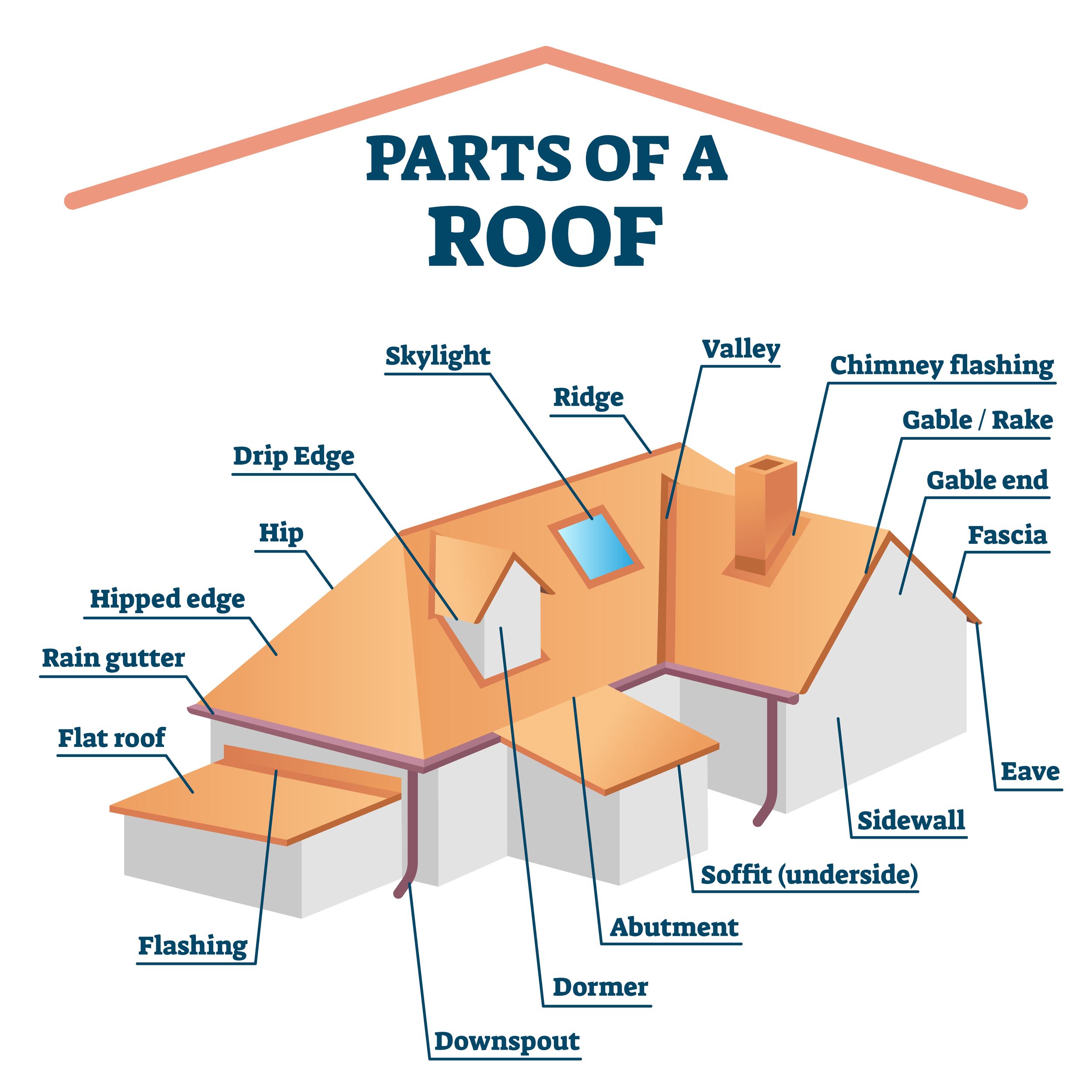
![]() Roofing is a complicated trade full of confusing terms. To help you better understand the words your roofer might use, we’ve put together an overview of all the parts of your pitched roof.
Roofing is a complicated trade full of confusing terms. To help you better understand the words your roofer might use, we’ve put together an overview of all the parts of your pitched roof.
We’ll start with the simplest type of roof and build on from there…![]()
Gable Roof Parts
A gable roof is a roof that’s shaped like the houses your kids draw. It has two sloping sides that meet at a peak.
Gable roofs contain the following parts:
- Ridge: The peak of your roof is the ridge. It’s the highest point on a sloped roof.
- Eaves: The eaves are the lower edges of the roof that overhang the home’s exterior walls. The diagram above also has an eave on the opposite side of the home in the same place.
- Gable: The A-shaped side wall of the home that forms the peak of the roof is called the Gable. The home above has two gables, one on each end of the home.
- Rake: The rake of the roof is the part that ends over a gable end.
Now let’s look at the parts of a slightly different roof type.
Hip Roof Parts
A hip roof is a roof where the ends are also sloped. The gable end is replaced by a hip end. Also, notice that a hip roof still has a ridge and eaves (as do all peaked roofs).
Hip roofs contain the following parts:
- Hip: Sloped, diagonal ridge between two sections of roof is called the hip ridge.
- Hip End: The sloped side of a roof with a peaked top.
Now, few homes in Arizona are as simple as the diagrams we’ve covered so far (that’d make for some boring houses). So let’s look at a more typical home and see what changes.

 Putting the Two Roof Types Together
Putting the Two Roof Types Together
- Valley: A valley is an inward joint where two sloping roofs meet. Your roof will likely have multiple valleys.
The Unseen Parts of Your Roof
So far, we’ve covered the parts of your roof that you can see. But with any roof, there’s more than meets the eye.
If you were to peel back your roof material (either shingles, shakes or tile), you’d find the following underneath:
- Rafters: Rafters are part of the frame of your home. They are the underlying structure that is holding your roof up.
- Decking: The decking goes on top of the rafters and acts as a solid surface for the rest of your roof covering (including the underlayment and shingles, shakes or tile). The decking material in most homes in Arizona is plywood.
- Underlayment: On top of the decking is a felt underlayment. The underlayment protects the decking and rafters from moisture.
Related: What Is Roof Underlayment? And What Does It Do for Roofs?
A Few Other Roofing Terms
You’ve got most of the basics down, now. But there are a few other roofing terms you may want to know:
- Fascia: A horizontal board that is fastened to the lower ends of roof rafters. If you have rain gutters, they’re attached to your fascia board.
- Soffit: Soffits are the underside of eaves.
- Drip edge: Metal flashing along the edges of the roof designed to divert rain away from the house. There’s no drip edge on the roof in the picture above, but the white line shows where it would be.
- Flashing (not pictured): Flashing is metal that’s used to help stop water from penetrating the junction of a roof with another surface. You’ll find flashing around chimneys and flue pipes and sometimes in valleys.
Further reading:
- Felt vs. Synthetic: Which Roof Underlayment Is the Best in Arizona?
- Best Arizona Roof Material: Tiles vs. Shingles
- Tile Roof Style and Color Options for Your Arizona Home
Lyons Roofing serves the entire Phoenix and Tucson metropolitan areas. Contact us for more information.


